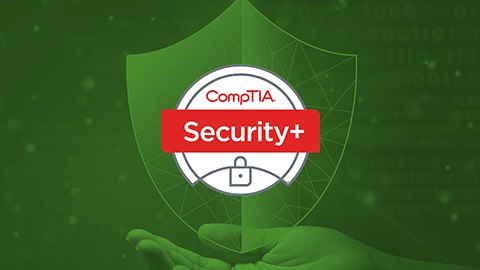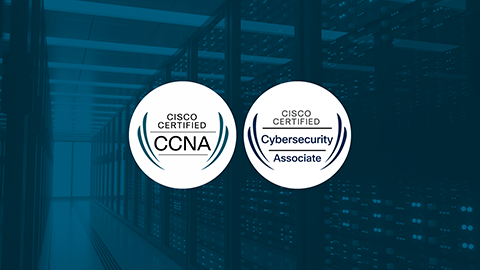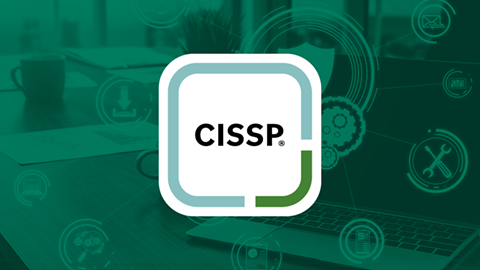
CompTIA PenTest+ (Penetration Testing) Training Boot Camp
This intensive 5-day boot camp is designed for security consultants, penetration testers, vulnerability assessment analysts, and IT professionals with 3-4 years of hands-on experience. This pentesting course will help students enhance their penetration testing skill set, allowing them to confidently fulfill their responsibilities in a security consultant or penetration tester role. Infosec is an authorized training partner of CompTIA, and our training has won numerous awards, including the CompTIA Outstanding Partner Award.

What you'll learn
Training overview
The CompTIA PenTest+ Training Boot Camp is an accelerated, in-depth training designed to help you enhance your penetration testing skills. It will equip you with the knowledge to confidently pass their PenTest+ certification exam and fulfill your responsibilities as a security consultant or penetration tester.
What will the PenTest+ Training Boot Camp do for you?
- Plan and scope a penetration testing engagement
- Perform vulnerability scanning and penetration testing
- Produce a written report with remediation techniques.
What's included
Everything you need to know about Penetration Testing training

- 90-day extended access to Boot Camp components, including class recordings
- 100% Satisfaction Guarantee
- Exam Pass Guarantee
- Exam voucher
- Free 90-day Infosec Skills subscription (access to 1,400+ additional courses and labs)
- Hands-on cyber ranges and labs
- Knowledge Transfer Guarantee
- Pre-study learning path
- Unlimited practice exam attempts
Syllabus
Training schedule
Day 1
Introductions
Scoping Organizational/Customer Requirements
- Define Organizational PenTesting
- Acknowledge Compliance Requirements
- Compare Standards and Methodologies
- Describe Ways to Maintain Professionalism
Defining the Rules of Engagement
- Assess Environmental Considerations
- Outline the Rules of Engagement
- Prepare Legal Documents
Footprinting and Gathering Intelligence
- Discover the Target
- Gather Essential Data
- Compile Website Information
- Discover Open-Source Intelligence Tools
Evaluating Human and Physical Vulnerabilities
- Exploit the Human Psyche
- Summarize Physical Attacks
- Use Tools to Launch a Social Engineering Attack
Preparing the Vulnerability Scan
- Plan the Vulnerability Scan
- Detect Defenses
- Utilize Scanning Tools
Day 2
Scanning Logical Vulnerabilities
- Scan Identified Targets
- Evaluate Network Traffic
- Uncover Wireless Assets
Analyzing Scanning Results
- Discover Nmap and NSE
- Enumerate Network Hosts
- Analyze Output from Scans
Avoiding Detection and Covering Tracks
- Evade Detection
- Use Steganography to Hide and Conceal
- Establish a Covert Channe
Avoiding Detection and Covering Tracks
- Evade Detection
- Use Steganography to Hide and Conceal
- Establish a Covert Channel
Day 3
Testing Wireless Networks
- Discover Wireless Attacks
- Explore Wireless Tools
Targeting Mobile Devices
- Recognize Mobile Device Vulnerabilities
- Launch Attacks on Mobile Devices.
- Outline Assessment Tools for Mobile Devices
Attacking Specialized Systems
- Identify Attacks on the IoT
- Recognize Other Vulnerable Systems
Web Application-Based Attacks
- Recognize Web Vulnerabilities
- Launch Session Attacks
- Plan Injection Attacks
- Identify Tools
Day 4
Performing System Hacking
- System Hacking
- Use Remote Access Tools
- Analyze Exploit Code
Scripting and Software Development
- Analyzing Scripts and Code Samples
- Create Logic Constructs
- Automate Penetration Testing
Leveraging the Attack: Pivot and Penetrate
- Test Credentials
- Move Throughout the System
- Maintain Persistence
Communicating During the PenTesting Process
- Define the Communication Path
- Communication Triggers
- Use Built-In Tools for Reporting
Summarizing Report Components
- Identify Report Audience
- List Report Contents
- Define Best Practices for Reports
Day 5
Recommending Remediation
- Employ Technical Controls
- Administrative and Operational Controls
- Physical Controls
Performing Post-Report Delivery Activities
- Post-Engagement Cleanup
- Follow-up Actions
Exam Readiness Activities
- Exam Experience
- Group Practice Questions
- Individual Practice Exams
Q&A and course wrap-up
Guaranteed results
Our Boot Camp guarantees
Exam Pass Guarantee
If you don’t pass your exam on the first attempt, get a second attempt for free. Includes the ability to re-sit the course for free for up to one year (does not apply to CMMC-AB Boot Camps).
100% Satisfaction Guarantee
If you’re not 100% satisfied with your training at the end of the first day, you may withdraw and enroll in a different online or in-person course.
Knowledge Transfer Guarantee
If an employee leaves within three months of obtaining certification, Infosec will train a different employee at the same organization tuition-free for up to one year.
Who should attend
The CompTIA PenTest+ Boot Camp is best for any professional who has 3-4 years of hands-on experience as a:
- Security consultant
- Penetration tester
- Vulnerability assessment analyst
- IT professional
What makes the Infosec PenTest+ prep course different?
As one of CompTIA’s top partners, you can rest assured that the PenTest+ training materials are fully updated and synced with the latest version of the PenTest+ exam. In addition, you’ll gain access to a PenTest+ prep course the moment you enroll, so you can prepare for and get the most out of your boot camp.
With 20 years of training experience, we stand by our penetration testing essential training with an Exam Pass Guarantee. This means if you don’t pass the exam on the first attempt, we’ll pay for your second exam at no additional cost to you!
Meets 8570.1 requirements
Attention DoD Information Assurance workers! This boot camp helps meet U.S. Department of Defense Directive 8570.1 requirements for department employees or contractors engaged in work related to information security.
Before your boot camp
Prerequisites
What's next?
After you finish the CompTIA PenTest+ Certification Boot Camp

After completing the CompTIA PenTest+ Certification Boot Camp, you’re ready for the next stages of your career. Here’s a glimpse at the future:
Completing your PenTest+ Boot Camp can help open various career opportunities in the cybersecurity field. As a PenTest+ professional, you can explore roles like Penetration Tester, Security Analyst, Vulnerability Assessment Analyst and more.
Exam Prep
What are some tips I should know when preparing for the PenTest+ exam?
The most important thing you can do is thoroughly review the topics tested in the certification exam. The CompTIA PenTest+ exam covers various cybersecurity concepts to help demonstrate penetration testing proficiency. Some domains are weighted more heavily than others, but all five are important:
- Planning and Scoping
- Information Gathering and Vulnerability Scanning
- Attacks and Exploits
- Reporting and Communication
- Tools and Code Analysis
Along with learning exam content, it helps to become familiar with the exam structure and outline. You’ll want to practice answering the performance-based and traditional questions you’ll face on the exam.
Career Opportunities
What are the career opportunities like for CompTIA PenTest+ certified professionals?
The CompTIA PenTest+ certification is for cybersecurity professionals tasked with penetration testing and vulnerability management. The top PenTest+ job roles at organizations are:
- Penetration Tester
- Security Consultant
- Cloud Penetration Tester
- Web App Penetration Tester
- Cloud Security Specialist
- Network & Security Specialist
- Information Security Engineer
- Security Analyst
FAQ
Frequently asked questions
Why should I get CompTIA PenTest+ certified?
CompTIA PenTest+ is the most comprehensive exam covering all penetration testing stages. Unlike other penetration testing exams that only cover a portion of stages with essay
questions and hands-on, PenTest+ uses both performance-based and knowledge-based questions to ensure all stages are addressed.
PenTest+ is the only exam on the market to include all aspects of vulnerability management. It not only covers hands-on vulnerability assessment, scanning, and analysis, but also includes planning, scoping, and managing weaknesses, not just exploiting them.
PenTest+ is the most current penetration testing exam covering the latest techniques against expanded attack surfaces. It is a unique exam that requires a candidate to demonstrate the
most relevant pen testing skills for the cloud, hybrid environments, web applications, customized systems (IoT), and traditional on-premises.
Should I get another certification before taking the PenTest+ exam?
It is highly suggested that students obtain either a Network+ or Security+ certification or have equivalent knowledge.
What are the top PenTest+ job roles?
People who have their pentesting certification work as a
- Penetration Tester
- Security Consultant
- Cloud Penetration Tester
- Web App Penetration Tester
- Cloud Security Specialist
- Network & Security Specialist
- Information Security Engineer
- Security Analyst
What are performance-based questions (PBQs)? And why do they matter?
The CompTIA PenTest+ performance-based questions come in various formats and require students to perform a specific task or solve a problem in a simulated environment.
These questions are more involved than standard multiple-choice, fill-in-the-blank or drag-and-drop questions and are used to gauge a student’s skillset in replicated scenarios that they may face during the course of their work.
What do I need to know about the new performance-based questions (PBQs)?
First, there may be questions in which there is more than one way to arrive at a correct answer. In these instances, the test taker will receive full points if the correct solution is achieved.
Second, on all CompTIA exams, there is a timer; however, with PBQs, this timer is not visible to the test taker.
Third, partial credit on answers is occasionally offered but is not guaranteed.
How is the PenTest+ related to the DoD 8140/8570?
The PenTest+ fulfills the requirements for Department of Defense (DoD) Directive 8140/8570, which is mandatory if you are looking to get a government job that is involved with any aspect of information security.
Can I work as a penetration tester without a degree?
Although having a degree in cybersecurity or a related field is helpful, you do not need a degree to work as a penetration tester. Experience in IT is the most essential prerequisite for working as a pentester. Certifications also help to start a career in pentesting; many professionals start with a more general option like the CompTIA Security+ before progressing to more specific programs like the CompTIA penetration testing certification.
What are the 7 stages of penetration testing?
A penetration test has seven phases:
Pre-engagement: During the pre-engagement phase, the pen-testers must first define the goals and scope of the penetration test. The involved parties also create rules of engagement to authorize what the testers are allowed to do.
Reconnaissance: Testers gather as much information as possible about a target system, such as the network topology, operating systems, applications, user accounts, and anything else that they can use to exploit the system.
Discovery: Pentesters search for entry points, typically using Nmap to scan and complete asset analysis.
Vulnerability analysis: During the vulnerability analysis phase, testers identify vulnerabilities from the gathered data.
Exploitation: Now, the tester will attempt to exploit the target system by simulating a real-world cyberattack.
Reporting: The penetration tester prepares a detailed document reporting the findings during each pentest stage.
Remediation: Lastly, using the findings from the pentest, the organization implements the necessary changes to fix its vulnerabilities.
Who should attend penetration testing training in the IT department?
Penetration testing training can benefit nearly all IT and cybersecurity professionals. For those looking to move into a proactive or offensive role (e.g., threat hunter, ethical hacker), pentesting training is essential. For those in defensive or administrative roles (e.g., security engineers, SOC analysts, security administrators, IT risk managers), the pentesting certification can help them understand how attackers gain access to systems, escalate privileges, exfiltrate data and attempt to cover their tracks.
Average Salary
Penetration Tester salary expectations
The average salary of a penetration tester in the U.S. is $113,535. Pay depends on several factors, such as industry, location, job title, and experience. Want to learn more about what a career as a penetration tester looks like and why it's important on any cybersecurity team? Click here.
View all schedule options
CompTIA PenTest+ (Penetration Testing) Training Boot Camp
$2,995.00
CompTIA PenTest+ (Penetration Testing) Training Boot Camp
$2,995.00
CompTIA PenTest+ (Penetration Testing) Training Boot Camp
$2,995.00
CompTIA PenTest+ (Penetration Testing) Training Boot Camp
$2,995.00
$2,995.00
Quick facts
- Duration
- 5 days
- Method
- Live online or team onsite
- Level
- 3-4 years of experience
- Average salary
- $113,535
Award-winning training you can trust




Ready to discuss your training goals? We've got you covered.

Unlock team training discounts
If you’re like many of our clients, employee certification is more than a goal — it’s a business requirement. Connect with our team to learn more about our training discounts.
Request Team PricingQuick facts
- Duration
- 5 days
- Method
- Live online or team onsite
- Level
- 3-4 years of experience
- Average salary
- $113,535
Award-winning training you can trust




Explore our top boot camps





